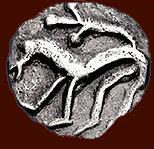













The Paragon Of Metal Detecting
& Archaeology
& Archaeology
Powered By Sispro1
Anglo-Saxon History Coins - Numismatics,
For Reference ONLY
Everything For The Detectorist
Anglo-Saxon Pound (Units)
Anglo-Saxon
Menu
Menu
Anglo-Saxon Timeline
Copyright All Rights Reserved by Nigel G Wilcox E-Mail: ngwilcox100@gmail.com
Designed by Nigel G Wilcox
The pound was a unit of account in Anglo-Saxon England, equal to 240 silver pennies and equivalent to one pound weight of silver. It evolved into the modern British currency, the pound sterling.
The accounting system of 12 pence = 1 shilling, 20 shillings = 1 pound was adopted from that introduced by Charlemagne to the Frankish Empire (see French livre). King Offa of Mercia is credited with causing the widespread adoption of the silver penny and the pound as a unit of account.
The pound in use in Offa's day, also known as the Saxon pound or moneyers' pound, remained essentially unchanged until 1526, by which time it had come to be known as the Tower pound. In 1526, the Tower pound was replaced by the (English) troy pound, which was, by law, equal to exactly 16/15 of a Tower pound. The Tower pound thus had a mass of 5400 English troy grains, or approximately 349.9 grams. The Tower pound was divided into 12 ounces, each ounce into 20 pennyweights, and each pennyweight into 32 grains. There were thus 640 grains to an ounce, 7680 grains to a pound. These grains were of a type known as the "wheat grain," as opposed to the much larger grain of the troy and avoirdupois systems, sometimes known as the "barleycorn." The Anglo-Saxon (Saxon / moneyer's / Tower) pound remained in use for silver coinage in England until 1344, and for weighing gold and silver until 1526
The accounting system of 12 pence = 1 shilling, 20 shillings = 1 pound was adopted from that introduced by Charlemagne to the Frankish Empire (see French livre). King Offa of Mercia is credited with causing the widespread adoption of the silver penny and the pound as a unit of account.
The pound in use in Offa's day, also known as the Saxon pound or moneyers' pound, remained essentially unchanged until 1526, by which time it had come to be known as the Tower pound. In 1526, the Tower pound was replaced by the (English) troy pound, which was, by law, equal to exactly 16/15 of a Tower pound. The Tower pound thus had a mass of 5400 English troy grains, or approximately 349.9 grams. The Tower pound was divided into 12 ounces, each ounce into 20 pennyweights, and each pennyweight into 32 grains. There were thus 640 grains to an ounce, 7680 grains to a pound. These grains were of a type known as the "wheat grain," as opposed to the much larger grain of the troy and avoirdupois systems, sometimes known as the "barleycorn." The Anglo-Saxon (Saxon / moneyer's / Tower) pound remained in use for silver coinage in England until 1344, and for weighing gold and silver until 1526
V
Pages
Main Coin Menu
Anglo-Saxon
Menu
Menu
Member NCMD
A.S. Menu
Information Data
























